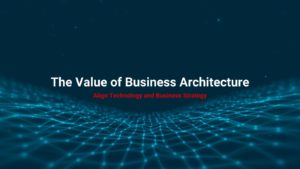Build Organizational Muscle.
As context and for convenience, here’s the original overview post in full.
Picking up with the focus of this post… the key is to have a plan, know what you would do and use the crisis to advance your strength and capability. If you don’t, you’ll be weaker and hamper the resilience of your enterprise to thrive while the crisis abates. This is about enhancing productivity, effectiveness, efficiency, and the agility of the organization.
Building Organizational Muscle is a huge topic. There are four major levers that need focus, investment, and orchestration.
- Workforce Mix & Skills (right size, right shape, right place, right skills, right cost)
- Operational Efficiency (high-speed software development, velocity, quality, DevOps)
- Architectural Re-Use (build once & use many, Common Services, Digital Hub/Core)
- Portfolio Modernization (dealing with the cost, complexity, and risk of existing assets)
I’ve broken the above into four separate blog posts because each of these topics is so important. Last week, I wrote about Workforce Mix & Skills and Operational Efficiency (“Busting the Bureaucracy”). This week is about Architectural Re-Use and Leverage. I’ll continue, in a future post, coming soon, to elaborate on Portfolio Modernization.
PART 5: ARCHITECTURAL RE-USE AND LEVERAGE
Building anything without a picture of what “it is” is almost impossible. Think of a complex 1,000-piece jigsaw puzzle without a box-top to guide your completion. At a minimum, it would be tedious, take forever, and require continuous rework. Take the same puzzle. If I give you a box-top picture of what it’s supposed to look like at the end, and I consolidate the 1,000 pieces into 100 pieces by pre-making big chunks of the puzzle, you can get it done faster and with less rework. That’s why Architecture Matters when building IT systems.
Obviously, building IT systems are more complex and less precise, but there are certain well-known principles that, if adopted, improve the velocity of the Build and the quality of the Run. In addition, if we build it right, it will be durable. In this era, the only way to build things that last is to architect them for change.
After 50 years of building and maintaining systems and technology, these architectural principles have become well known. Every company should be working on building systems that have all of the following characteristics:
- Layers that can be changed at different intervals
- Loosely coupled components
- Connected through well-known interfaces (APIs)
- Externalized business rules and workflows
- Reusable building blocks
- Prefabricated infrastructure that can be spun up to meet surges
- Data and analytic platforms that integrate data at rest and events in motion
- Functional systems with good business function and healthy technical quality
Some of us are well along and are seeing the leverage, real productivity, and quality. Others are just starting and trying to invest in order to get ahead of both the new development business demand and the simultaneous requirement for continuous legacy modernization. The current crisis can sidetrack, and possibly, set your efforts back. Whenever there is a crisis, there is always opportunity to both respond to the crisis AND to accelerate the strategic transformation by using the “Go Short”(-Term) and “Go Long”(-Term) filters and apply them to architecture as well.
“Go Short”(-Term): First Listen, Then DECIDE
One of the great things about most architects is they are extremely talented and opinionated. Give me a room with ten architects, and you’ll get ten opinions. After fighting it out for a few months, they will narrow their differences, but they will never agree on everything and decisions will be slow to come. As leaders it’s our job to make decisions – especially in a crisis. For example, on Cloud strategy, there are only a few choices. Each has strengths and weaknesses. Make a call. The team will understand and get over it quickly. The same thing is true for development, testing, project management tools, repositories, etc. Data strategies are more complex, but platforms can be decided so there’s not an explosion of multiple platforms. The organization will respect a leadership team that’s decisive in a crisis, especially if you carve out the time to hear everyone out, including the respected group of senior architects and officers. In an IT organization, especially in crisis, democracy or autocracy are the worst forms of government.
Once the decisions are made, communicate internally and externally so people can understand WHAT decisions were made and WHY. This simple and fast approach, your decisiveness and communication, will leapfrog your productivity and leverage. And, it doesn’t cost anything to do it this way, in fact it should save you time and money. Even more importantly, you’ll also be well positioned to accelerate the long game.
“Go Long”(-Term): OPERATIONALIZE Enterprise Architecture for True Agility
These decisions you make in the short-term will pay big productivity dividends in the long-term. But, and it’s a big BUT, only if you commit to embedding those decisions into your organization DNA. That is, we, as leaders, have to make it real and actionable. Many organizations have an elegant architecture in PowerPoint, but people bypass the architecture and fall into old habits. Do they bypass “it” because they’re evil? Or is it just that they don’t know WHAT “it” is or WHY “it” is important or HOW “it” could help them do their jobs faster, better, and cheaper?
I’m willing to bet it’s not because they’re evil. In 10 out of 10 cases, in my experience, the architecture, decisions and commitments – and the reasons and benefits – are not well known, or easily accessible, or helpful, or they are seen as optional. That’s the long-term work – to continue to bring the architecture to life. Enterprise Architecture is a living, evolving part of a great IT organization. Don’t wait for the architecture to be complete or perfect. Begin making people aware of what has been decided, why it is important and helpful to them, where to go to find it (don’t make developers hunt for it or give them an excuse to avoid it), and how they should apply it to their projects.
Beyond this, the longer-term issue is OPERATIONALIZING Enterprise Architecture. That requires building architectural muscle in the organization, processes, and culture.
IT has traditionally been great at getting Business Outcomes, but oftentimes this is done “by-hook-or-by-crook” at the expense of any Architectural Outcomes and the Productivity of the organization. The result has been a buildup of cost and complexity that also drives risk and slows down change, response, and innovation. We can’t afford to let that continue – in general over time and especially in a crisis. In this Modern Era, HOW we build for true Business Agility is as important as WHAT we build. Therefore, Architecture Outcomes, and the Productivity Outcomes that they enable, need to be of equal priority to Business Outcomes.
Author: Charlie Feld, Founder, The Feld Group Institute
Connect with Charlie Feld on LinkedIn ![]()
Photo by Anastasia Petrova on Unsplash




